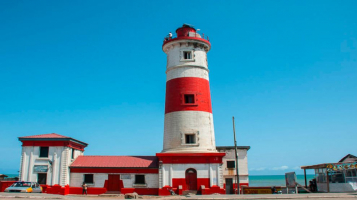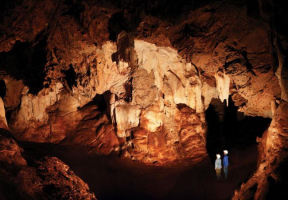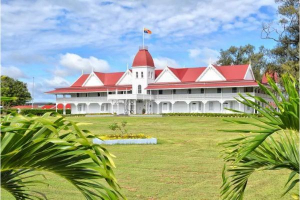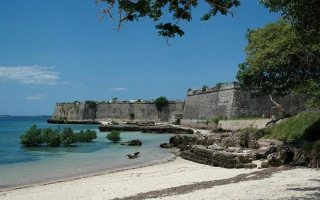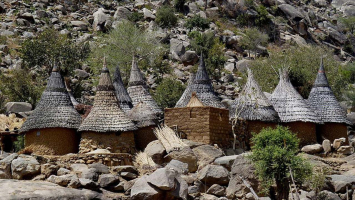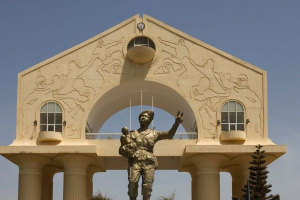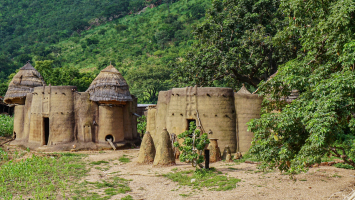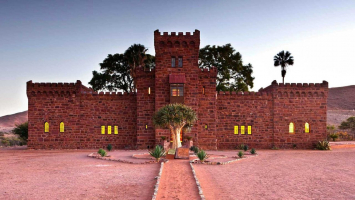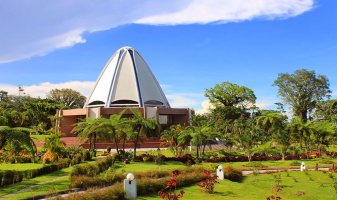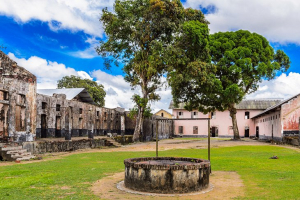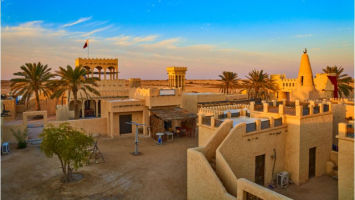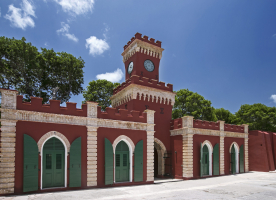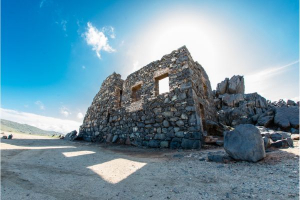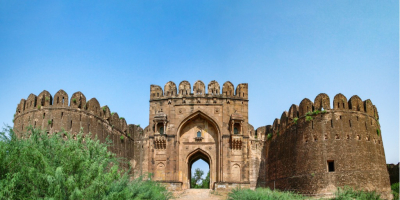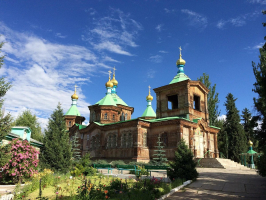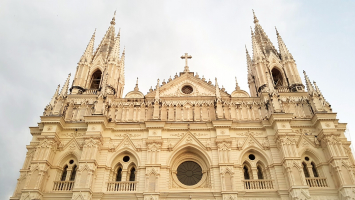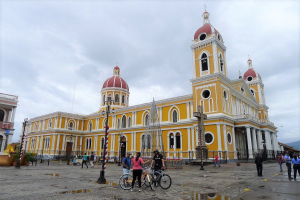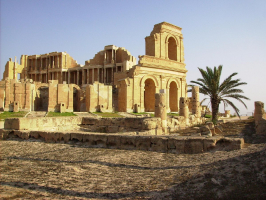Top 7 Most Famous Historical Sites in Grenada
Grenada offers a number of interesting historical sites to explore around the island as well as more contemporary cultural points of interest. The engaging ... read more...history of this Caribbean island is brought to life when you visit the many forts and old estates across the island. Check out our blog for top 7 most famous historical sites in Grenada.
-
The sculptures in Grenada's Underwater Park have merged so completely with the environment that diving to see them personally may lead you to assume that art has existed since ancient times, depending on what you see and the atmosphere. The park was built in 2006, thus this isn't the case. Some of the sculptures, which are made of concrete and steel, weigh up to 15 tons. On the seafloor, they're held in place by bolts. The sculptures, which number 75 in total, attract divers of all kinds as well as glass-bottom boat trips, which provide good views because some of the works are close to the surface.
Grenada's Underwater Sculpture Park has so far withstood the test of time, albeit some of the sculptures have been damaged. It's just as well, because the sculptures' essence remains, and the national park continues to support conservation efforts by donating a portion of admission money to help with marine management activities. This is also one of the most famous historical sites in Grenada.At the underwater sculpture park, there are a number of sculptures simply waiting to be discovered. It was not only the objective of the British sculptor who designed it to produce something that would look excellent underwater, but also to aid in conservation efforts. Reef damage has already occurred, and the sculptures were erected to help safeguard the reefs, maintain the ecosystem's health, and eventually restore aquatic life in the area.
Location: Molinere Beauséjour Marine Protected Area, Grenada
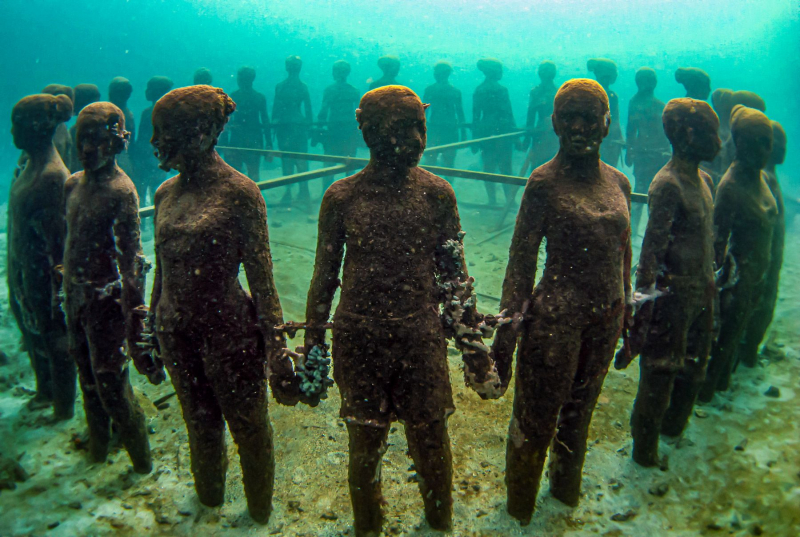
Photo: www.sandals.com 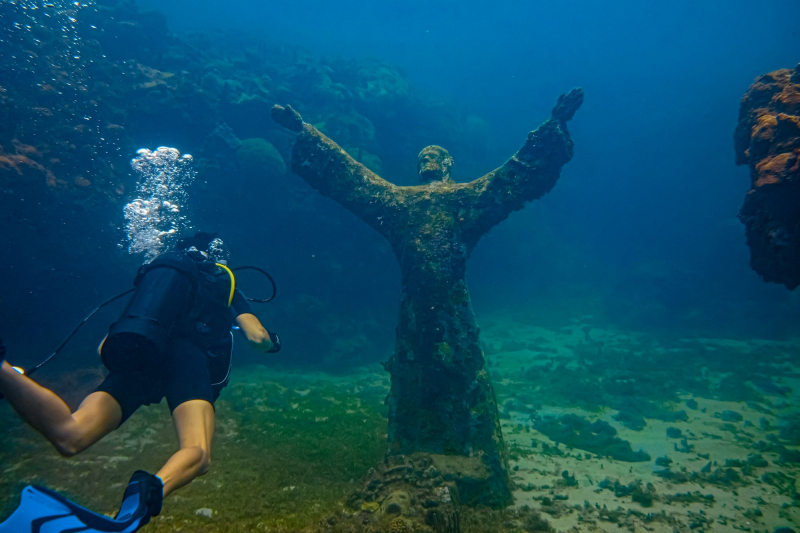
Photo: www.sandals.com -
The Scots founded Grenada's first Presbyterian church, St. Andrews Kirk, which was affiliated with the Church of Scotland. It first opened its doors on July 14, 1833. This labor extended over the island when slavery was abolished in 1880. Progress was noticeable in Samaritans in Belair, Grenada, and St. Patrick's.
The Church of Scotland left Grenada and St. Vincent Island in 1945 to support the mission. It was suggested that they join the Methodists, but there was great opposition, so they later joined the Presbyterian Church in Trinidad and Tobago and became the Northern Presbytery of that organization. The congregation swelled dramatically. It became self-contained on April 20, 1986. The Apostles' Creed, the Nicene Creed, and the Westminster Confession of Faith are the three major creeds. Granada's Presbyterian Church has four congregations and around 900 members. It is a member of the World Communion of Reformed Churches (WCRC).
St Andrew's Kirk was founded by Scottish immigrants to Grenada, who lay the foundation stone for their church. The building of Scot's Kirk took three years to complete. Since then, the imposing clock tower has stood guard over St. George's Inner Harbour, with a bell cast in Glasgow, Scotland. Protestants make up about half of the island's population. On September 7, 2004, the church was tragically damaged by Hurricane Ivan. Repairs have yet to be completed. Take note of the tower perched on a hill with a view of the cruise port. It can be used as a guide to help you climb the stairs and along the path that leads to Fort George.
Location: 362W+9G8, Grand Etang Road, St George's, Grenada
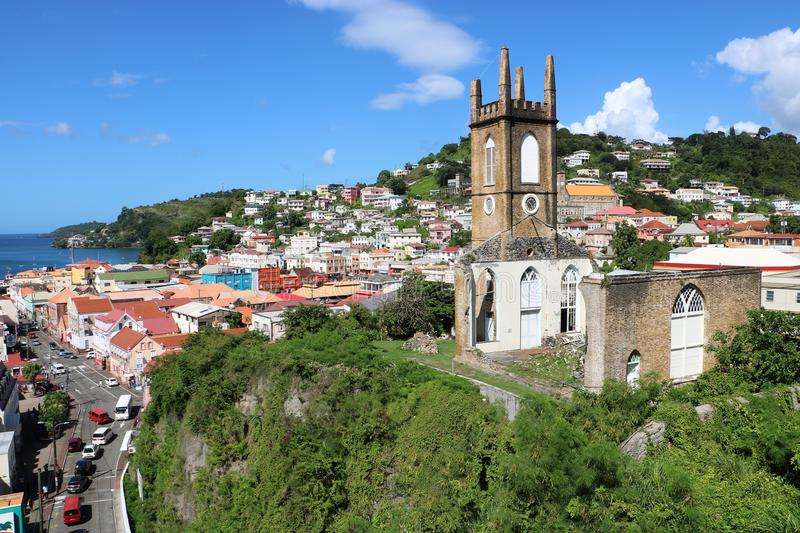
Photo: dreamstime.com 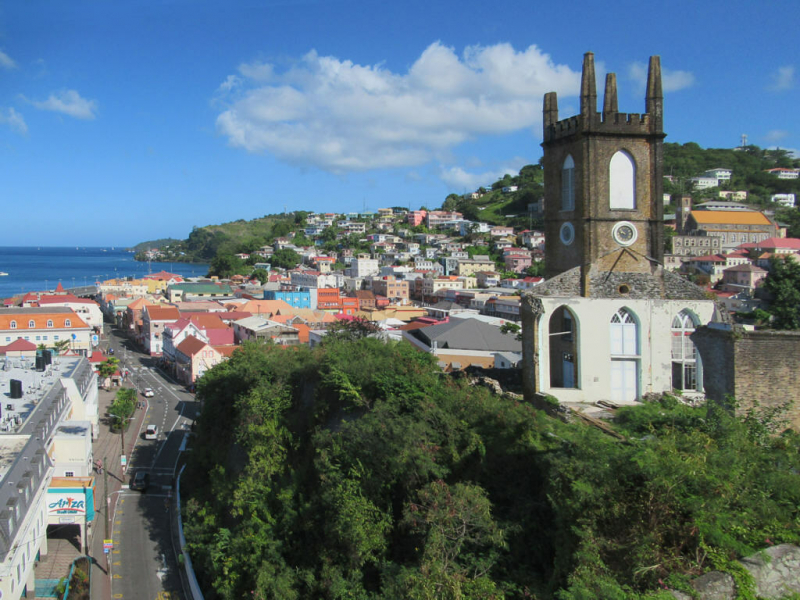
Photo: Flickr -
Fort George which was built from 1706 to 1710 on the site of an early French fortification built in the 1600s is one of the most famous historical sites in Grenada. Originally named Fort Royal, it was renamed Fort George in 1763 when the British acquired possession of the island in honor of King George III.
It's a small bastion tracer fort, which means each level can provide covering fire for the next, and it's been in use in some form or another since it was constructed. It was once the heart of the town, but as the town grew and circumstances changed, it was reduced to being utilized as a plain, large structure. The Royal Grenada Police Force is currently housed there, but there are areas that are open to the public. The panoramic vistas are breathtaking.
Fort George is regarded as the most important historical edifice in St. George's because of its role in all of the island's political and military upheavals over the last three centuries. The parade, two barracks, a guardroom, gunpowder magazine, water cistern, Sally port, and firing galleries highlight the iconography of the classic period of European bastioned fortifications. Fort George now serves as the police headquarters, with unrivaled views of St. George and the ocean. Much of the colonial building is still intact, and wandering around the passages and stairwells of the ancient stone walls is part of the fun of a visit. Fort George still has a battery of antique cannons that are utilized to fire a booming salute on rare occasions.
Location: 26XW+QG2, Grand Etang Road, St George's, Grenada
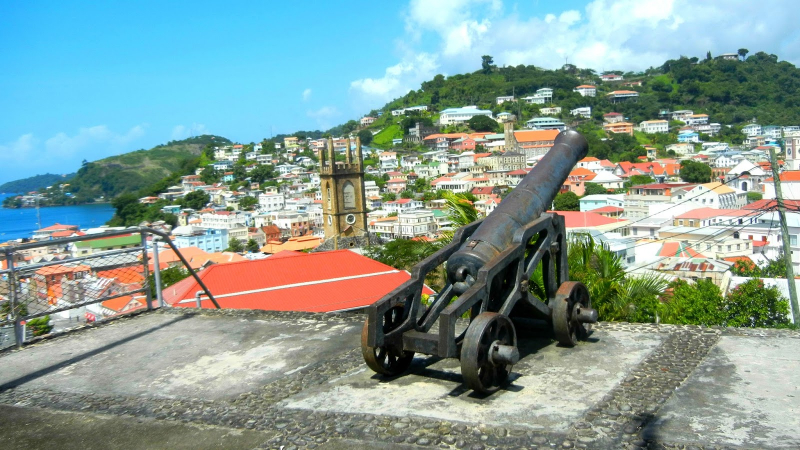
Photo: https://blog.cariboutdoor.com/ Video: Goats On The Road -
Fort Matthew is the island's largest fort and has served as a battleground throughout the mental asylum's history. The interesting original features, such as bathrooms, kitchens, subterranean tunnels, and cells for detaining the violently mad, date from the 18th century and are still in situ today.
The fort's vistas are just breathtaking. The town of St. George, the new cruise port, St. George's University, the surrounding countryside, and the Caribbean Sea can all be seen from this vantage point. There are guided tours available, as well as the option to rent out the facilities for private events.
Fort Matthew, which has served as a war and an insane asylum, is a physical testament to the Grenadian people's struggle. This 1500-yard fort, which was named after the governor at the time, Governor Edward Matthew, is the largest on the island. Bathrooms and army kitchens from the 18th century, underground tunnels, and prisons are just a few of the fascinating elements that have been preserved in their natural state. Standing at one end of this enthralling building, you'll be treated to a breathtaking view of St. George, including the Melville Street Cruise Port, St. George's University, the Carenage, and much more.
The Ministry of Tourism may arrange for guided tours and the facilities can also be used for private functions. Fort Matthew is still standing on Richmond Hill in St. George, with a rich history that you can nearly breathe!
Location: 3726+4Q7, St George's, Grenada
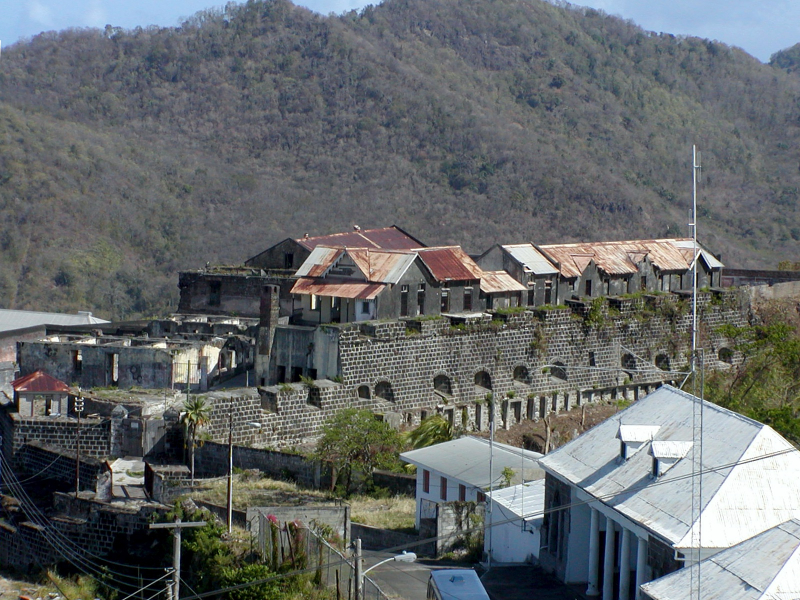
Photo: Wikipedia Common Video: Discover The World -
If you're interested in the history, transformations, and power struggles that the Caribbean islands have experienced, this is the place to visit. Fort Frederick, perched atop Richmond Hill in the heart of St. George's, is a bastion-style fort with a 360-degree perspective of the city.
Fort Frederick was built by the French in 1779 and was quickly exploited by the British in defense of the French, despite the fact that it never fired a cannon in action. It's the best-preserved fort on the island, with stunning panoramic views. At the bottom, there are a few of brief tunnels — carry a torch because there is no lighting. The fort is located 114 miles east of St George's on the road to St Paul's, on Richmond Hill. Fort Matthew, barely 150 meters away, isn't quite as impressive, but it's still worth a look.
Fort Frederick was built by the French to maintain their position after they had so easily seized the island from the British in 1779, along with three other forts, one of which is right next door and readily visitable, though in poor shape (the Americans bombed it in 1983). After walking through its majestic arches, you can enjoy the lovely Carenage to the south and the rolling mountain ranges to the north, which are covered with rich greenery and small cottages. Fort Frederick is now a tourist attraction with breathtaking vistas and several levels with enchanting views over Grenada's main city.
Location: 27X6+7XH, Richmond Hill, Grenada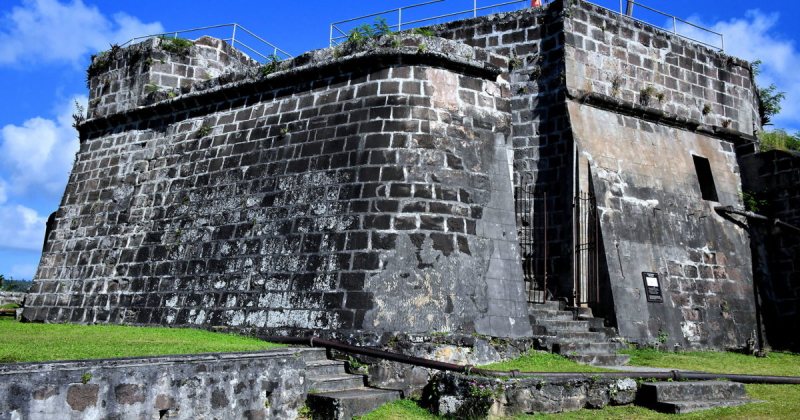
Video: Angie Alexis -
This attraction, which is located on the 500-acre Westerhall Estate near St. David's, is home to the western hemisphere's oldest working waterway. The historic artifacts and equipment that make up the refinery process can still be found at the distillery. Come discover how rum is made, have organic meals on the estate, and drink a range of rums, including our new 'Spicy Rum Punch.' Westerhall Estate is one of the most famous historical sites in Grenada.
Westerhall was was a privately held agricultural estate that produced sugar cane, coconuts, bananas, and limes before 1966. There was a tiny rum distillery on the estate, but it wasn't the main focus at the time. The current family purchased the grounds and machinery in 1965 and formed Westerhall Estate Ltd. to produce Westerhall Rum exclusively.
The original location is now utilized to blend and bottle six different rum brands: Vintage Rum, Plantation Rum, Superb Light Rum, 12 degrees Rum, Dark Rum, and Jack Iron Rum.
Location: 279W+HGV, Becke Moui, Grenada
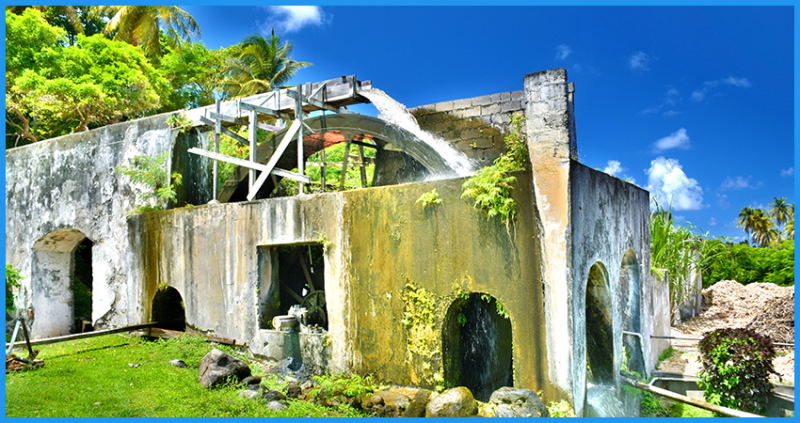
Photo: explorergrenada.com Video: My Life, Our World -
The last famous historical site in Grenada is Belmont Estate. On Grenada's Spice Island, Belmont Estate is the most popular tourist destination. Belmont Estate is a unique and original 17th-century estate located near St. Patrick, about an hour's picturesque drive from the island's capital, St. George. Belmont Estate provides visitors with a unique experience that enhances their vacation while also preserving and safeguarding our natural environment. Belmont assures that tourists get a true sense of Grenada, including its history, culture, tastes, and traditions, while also being environmentally conscious. This estate's chocolate is known around the world for being organically grown and fairtrade certified. Take a tour of the estate and learn about the chocolate-making processes that are utilized here.
Guests at Belmont Estate can take part in exciting tours of our organic farm, gardens, heritage museum, and cocoa processing facilities. Belmont Estate also has a traditional Grenadian restaurant, a goat dairy farm, a petting farm, a conference room, a gift store, a café, a produce shop, a credit union, and a craft market. Enjoy the best of Grenadian hospitality, traditional rural life, and the spectacular beauty, tranquility, and diversity of Belmont Estate's environs.
Location: 59FF+W68, St Patrick's, Grenada
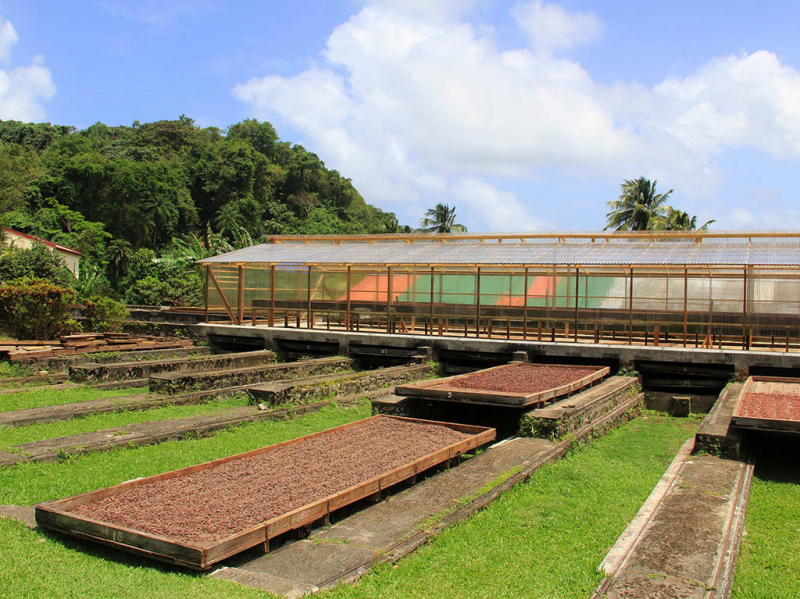
Photo: Pure Grenada Video: Danielle Straker









